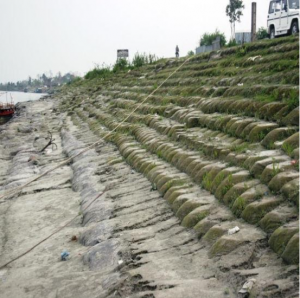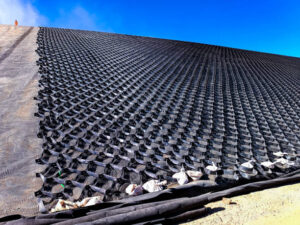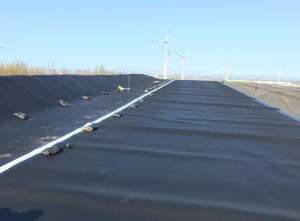Case Study: Enhancing Road Durability on the Vadodara-KLM Expressway Using Ocean HDPE Geocell
Introduction
India’s rapid infrastructure development has highlighted the crucial role of advanced geosynthetic materials in ensuring the longevity and stability of large-scale transportation projects. One such critical initiative is the Vadodara-KLM Expressway, a vital roadway corridor designed to improve regional connectivity in Gujarat. For this high-traffic project, Ocean Non Wovens supplied 15,000 SQM of Ocean HDPE Geocell (75*712 mm) to provide robust ground stabilization and soil reinforcement.
This case study explores how the deployment of our HDPE geocells significantly improved the structural integrity and lifespan of the expressway, delving into aspects of design, performance, sustainability, and ground-level impact—particularly those often overlooked in conventional project overviews.
Project Overview: Vadodara-KLM Expressway
The Vadodara-KLM Expressway is part of India’s broader effort to establish high-speed, low-maintenance transport corridors. The expressway is designed to handle high axial loads, especially from freight traffic that frequently causes early-stage pavement distress in conventional road structures.
Located in Vadodara, Gujarat, the site’s subgrade soil presented several challenges:
- Poor load-bearing capacity
- Susceptibility to differential settlement
- Waterlogging risks during monsoon season
To mitigate these issues, Ocean HDPE Geocell technology was introduced, offering an advanced, sustainable, and cost-effective ground reinforcement solution.
Why Ocean HDPE Geocell (75*712 mm)?
Geocells are three-dimensional honeycomb structures made from high-density polyethylene (HDPE). When expanded and filled with granular material, they form a stable composite that:
- Constrains lateral soil movement
- Reduces vertical and horizontal deformation
- Distributes loads across a wider area
Our Ocean HDPE Geocell (75*712 mm), specifically chosen for this project, offered several project-specific benefits:
| Parameter | Specification |
| Cell Height | 75 mm |
| Cell Width | 712 mm |
| Area Supplied | 15,000 SQM |
| Material | Virgin HDPE |
| Seam Strength | > 14.5 kN/m (ASTM D638) |
| Resistance | UV, oxidation, and chemical-resistant |
These cells are inert to microbial attack, weather-resistant, and perform consistently in extreme temperatures—making them ideal for Indian climates.
Application in the Vadodara-KLM Expressway
Deployment Strategy:
The geocell system was laid out across subgrade areas identified as structurally weak. Key operational phases included:
- Site Preparation: Clearing and compacting the base soil layer.
- Geocell Installation: Laying and expanding the Ocean HDPE Geocells to their full width.
- Infill Placement: Using locally available granular material (GSB) to fill the geocells.
- Compaction and Layering: Compaction using vibratory rollers for surface uniformity.
By creating a composite mattress, the geocells restricted the movement of the fill material, substantially improving the load transfer efficiency of the pavement layer.
Data-Driven Benefits
Numerous field studies and technical evaluations validate the performance of geocells in road applications. According to research published in the Indian Highways Journal by IRC (2022), geocell-reinforced pavements can:
- Improve CBR values by up to 50%
- Reduce base course thickness by 30%–40%
- Extend pavement life by more than 3 times under similar loading conditions
(Source: Indian Roads Congress, Paper No. IRC-100/2022)
These metrics closely align with field performance on the Vadodara-KLM Expressway, where our product reduced layer thickness while maintaining load-bearing performance.
Beyond Load-Bearing: Hidden Advantages
While most companies talk about strength and load capacity, several lesser-known advantages of using geocells include:
- Faster construction time: Reduced need for deep excavation and multiple base layers.
- Lower carbon footprint: Using local fill materials reduces transportation emissions.
- Sustainability: Ocean Geocells are 100% recyclable and contribute to green infrastructure ratings.
- Improved drainage: The structure aids lateral water movement, reducing hydrostatic pressure buildup beneath the road surface.
Additionally, geocells help mitigate frost heave, a phenomenon common in northern parts of Gujarat during extreme weather cycles.
Local Impact and Long-Term Maintenance
From a local economic standpoint, the project utilized locally sourced materials, helping reduce overall project cost and benefiting nearby suppliers. The low maintenance requirement of geocell-reinforced roads ensures fewer closures, thus minimizing downtime for commuters and logistics vehicles.
Furthermore, geocell integration supports long-term pavement integrity, reducing the frequency of pothole formation and rutting, which are common causes of road-related accidents in India (source: MoRTH Annual Report 2023).
Conclusion & Promotional Note
At Ocean Non Wovens, our goal is to provide not just geosynthetics—but groundbreaking solutions. The successful deployment of 15,000 SQM of Ocean HDPE Geocell (75*712 mm) in the Vadodara-KLM Expressway project stands as a testament to our commitment to quality, innovation, and sustainability.
Whether it’s highways, haul roads, or urban pavements, Ocean HDPE Geocells help improve the lifespan, safety, and sustainability of every square meter of road built. With manufacturing precision, rigorous quality checks, and technical support from start to finish, Ocean Non Wovens continues to lead India’s geosynthetics revolution—one road at a time.
Need technical support for your next infrastructure project? Contact Ocean Non Wovens today and let our engineering team help you build stronger, longer-lasting roads.



